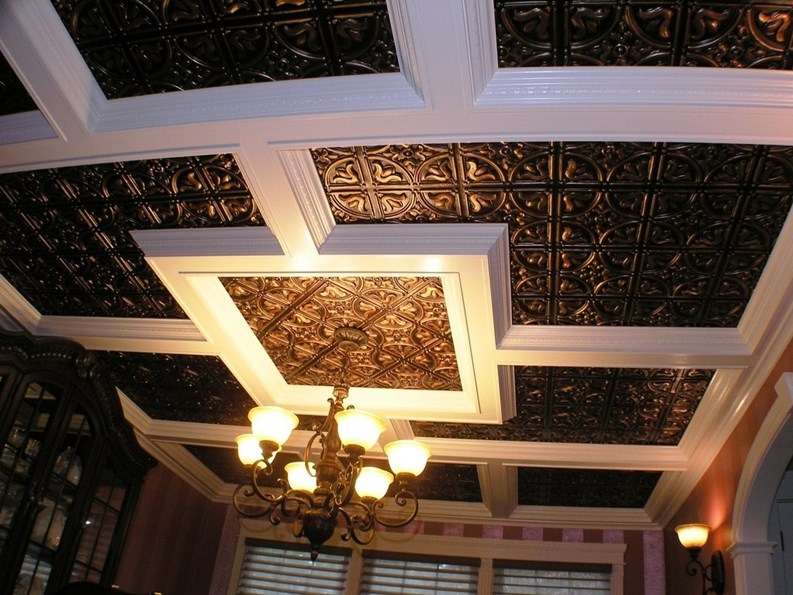The U.S. Environmental Protection Agency (EPA) estimates that 136 million tons of construction and demolition waste was generated in 1996, which was the last time these figures were made available, and those numbers have most likely risen in the 15 years since.
The data shows that the majority of the waste came from demolition and renovation, while the rest came from new construction, with less than 30 percent of that waste salvaged for recycling. Today, architectural salvage, which in simplest terms is the reclamation or reuse of architectural materials, is gaining popularity in our more environmentally-conscious society.
“The advantage of this is that it’s generally better quality, a better price and has a lot more character than something newer,” says Stuart Grannen, the owner of Architectural Artifacts Inc., an architectural salvage company in Chicago, which boasts an 80,000-foot showroom. “Our focus has always been on pieces of intrigue, objects of a lost world, the aesthetic and the beautiful. It’s a lot more fun, and you can always feel good about the green part of it all.”
Remodeling with secondhand building materials has many fans. Some are owners of historic houses who improve their homes by adding period elements. Others follow green building practices and appreciate conserving resources and keeping materials out of landfills. And still others are looking for quirky elements that will break their homes out of cookie-cutter molds.
Materials used come from salvaged elements from buildings slated for demolition, including homes, churches and commercial properties and may range from aged barn wood flooring, furniture, doors, and marble fireplaces to claw foot tubs, ornate radiators and handcrafted decorative hardware.
“You can repeat antique elements, but it’s not the same,” says Steve Feldman, president and founder of Green Demolitions, which recycles luxury kitchens, bathrooms, appliances, architectural elements, home décor, and more in 43,000 square feet in three stores in New Jersey, Connecticut and Pennsylvania. “Manhattan is a great source for some of this material because of all the historic buildings.”
The salvage and reuse of building materials helps to preserve historic and antique fixtures, furniture, and building materials, prevents more waste from entering landfills, and reduces the consumption of new resources.
Salvaged masonry materials also give buildings a historic look. Using antique brick in a new project or remodeling job will create a space that conjures up the feeling of a century-old structure, even in a brand new installation.
“The main reason we go to salvage is to match what’s already on a building. Usually, if you want something historic, you need to use salvaged materials,” says Jeffrey Frake, vice president of the Masonry Preservation Group Inc., in Merchantville, New Jersey. “You just flat out can’t get a match for it any other way.”
Nothing New
Designers have known about this decorating secret for decades, but it has more recently come into fashion in the past 20 years or so.
Zaborski Emporium has been operating in Kingston, New York for 15 years, but the family has been involved in the business for almost four decades.
“There is a development in Chicago built in the 1960s which utilized a lot of reclaimed stained glass and beautiful woodwork and other architectural elements and in doing so, that is one of the neighborhoods that maintained the value in its home because of the uniqueness and it never goes out of style,” says Sandy Balla, one of the operators of Zaborski. “This is nothing new. We work with designers, architects and private individuals on a regular basis.”
Grannen started working with reclaimed stained glass more than 45 years ago and has had his store open since 1987. A journey through his store and you will see an 18th Century Italian armoire next to two French mirrors, next to a big easel from Argentina, next to limestone from the Michigan Avenue Bridge.
“All of these things can be used again, and it’s all pretty high quality things,” Grannen says. “If people are looking for a marble bathtub or a sink from a French chateau, we deal in these vintage things.”
This & That
When it comes to materials, almost anything that comes from a home can be reused, especially kitchens and bathrooms that are ripped out.
“People have a use for almost anything, as long as it hasn’t been trashed,” Balla says. “Whether its architecturally beautiful or not, it may just be utilitarian for a while in a home, and then stuff will get ripped out again.”
Balla says that even items you may think would never sell, do, as there is a buyer for everything.
“The thing that cracks me up is mid-century,” says Balla. “not 1850s mid-century, but stuff from the 1950s and ’60s, like a pink bathroom. You wouldn’t think people would want that, but people are buying houses that have been modernized and they are putting it back in because they think it’s old,” Balla says. “They want an aqua bathtub! That’s what they remember as children, and so it sells.”
Feldman believes that different styles are always going to be relevant, it’s the matter of just finding the right people. “We have three different stores in three different markets. Different people have different tastes, styles and budgets,” he says. “Someone’s taste in Manhattan may be different than their taste in a summer home.”
The items used don’t need to be used for what they were designed for, either. Many of the ornate or unique things are often used as standing art or for some other purpose.
“I bought an 18th century door from Saudi Arabia that’s around 260 years old with intricate carvings, and it’s never going to be a door again but it’s a beautiful object for the home,” Grannen says. “I have a gate from Argentina, that’s totally useless as a gate, but it can be used to make a fabulous headboard.”
Time and Patience
Someone looking for the perfect reclaimed item for their home is probably not going to just walk into one of these businesses and walk out five minutes later with exactly what they were looking for. A customer interested in a an ornate wood mantelpiece or a specific set of Victorian doors has to be willing to compromise on some of the details and commit some time to the endeavor.
“I tell people before they come to the store to wear comfortable shoes and eat a good lunch, because they could spend hours looking around,” Balla says, referencing her four-story, 40,000 square-foot building. “We will work with those who are very particular. Some people try to match specific hinges; it’s not enough that they are ornate, they are willing to wait and spend time looking for the exact ones.”
If the items needed aren’t available, most of those in the business will keep a list of what people are after and call if and when those items make it to the store. “We will always work with designers,” Grannen says, “but sometimes they ask us to find a blue elephant and then we find the perfect one and they tell you they wanted lighter blue, so it can get challenging.”
The key for success seems to be persistence and the ability to be a little flexible. “I keep a list, but the people who call me once a month are the ones who get what they are looking for,” Balla says. “Right now, someone is looking for a half-round window, and they are in the book. For people who need bluestone in quantity, cut the way it used to be cut, there is a waiting list.”
Green Demolitions offers an online store, including a special section for last-minute arrivals. “We just got in a historic fireplace mantle,” says Feldman, “and you never know what we’re going to come across. It’s up to consumers to keep checking. We do have a sales team to get back to people, but most consumers come online every day to see what came in as its constantly updated. It’s first-come, first-served, so you need to buy before you lose it because there may never be another one of whatever it is again at that price point.”
Advantages Abound
Green Demolitions was created to earn the funds to support the worldwide addiction recovery outreach programs of the Twelve Step program of All Addicts Anonymous. Through donations, they recycle luxury kitchens, bathrooms, appliances, architectural elements, home décor, and more, all at 50 to 90 percent off.
“New York City has so much great stuff being thrown out—and that’s where we come in,” Feldman says. “In today’s topsy-turvy economic environment, one of the huge advantages of what we do is price. We received a donation of a quarter-million-dollar kitchen from New Cannan Connecticut, and a homeowner in Morristown New Jersey picked it up for $50,000, picking up $250,000 equity in cabinetry.”
Balla agrees that in addition to uniqueness, value is a major motivator for her customers. “If you put in a state-of-the art Jacuzzi, it could be out of style in 15 years,” she says. “But if you add in an old Victorian bathtub, that will never go out of style and will help the value in your home.”
In addition to the financial savings and aesthetic perks, the real beneficiary from all these projects is the environment.
“We protect the forestry by not throwing thing out, landfill waste and energy cost, Feldman says. “When you throw something out in New York, the debris needs to be driven upstate by truck, seven hours away. You’re talking a lot less trips and a lot less waste.”
And that’s the best bargain of all.
Keith Loria is a freelance writer and a frequent contributor to The Cooperator.







Leave a Comment